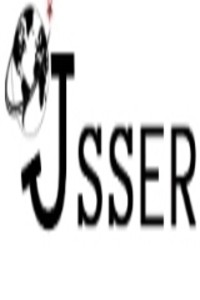Secondary Social Studies Teachers’ Time Commitment when Addressing the Common Core State Standards
Secondary Social Studies Teachers’ Time Commitment when Addressing the Common Core State Standards
Standards, Social Studies, Testing Common Core, Teaching,
___
- Ahn, R. & Class, M. (2011). Student-centered pedagogy: Co-construction of knowledge through student-generated midterm exams. International Journal of Teaching and Learning in Higher Education, 23(2), 269-281.
- Anderson, N. (2010, March 10). Common set of school standards to be proposed; Achievement is chief goal Governors, state chiefs develop blueprint. The Washington Post. Retrieved from http://www.washingtonpost.com/wp- dyn/content/article/2010/03/10/AR2010031000024.html?hpid%3Dtopnews&sub=AR
- Barksdale-Ladd, M. A., & Thomas, K. F. (2000). What's at stake in high-stakes testing: Teachers and parents speak out. Journal of Teacher Education, 57(3), 384-397.
- Barton, K., & Levstik, L. (2003). Why don’t more history teachers engage students in interpretation? Social Education, 67, 358–361.
- Beck, D. & Eno, J. (2012). Signature pedagogy: A literature review of social studies and technology research. Computers in the Schools, 29:70–94
- Caron, E. J. (2005). What leads to the fall of a great empire? Using central questions to design issues-based history units. Social Studies, 96(2), 51.
- Chudowsky, N., & Pellegrino, J. W. (2003). Large-scale assessments that support learning: What will it take? Theory into Practice, 42, 75–83.
- Cimbricz, S. (2002). State-mandated testing and teachers’ beliefs and practice Educational Policy Analysis Archives, 10(2). Retrieved from http://epaa.asu.edu/ojs/article/view/281
- Conley, D. (2011). Building on the common core. Educational Leadership, (68)6, 16-20.
- Creswell, J. (2005) Educational research: planning, conducting, and evaluating quantitative and qualitative research. Upper Saddle River, NJ: Pearson Education, Inc.
- Dillman, D. A., Smyth, J. D., & Christian, L. M. (2009). Internet, mail, and mixed-mode surveys: The tailored-design method. Hoboken, NJ: Wiley & Sons.
- Education Week. 2006. Quality counts, January 5.
- Fischer, C., Boi, L., & Pribesh, S. (2011). An investigation of higher-orderthinking skills in smaller learning community social studies classrooms. American Secondary Education, 39(2), 5–26.
- Florida Department of Education. (2012, September). Common core and the classroom: What can I expect for my child in the classroom? Just for Parents, (1)3, 1-3. Retrieved from http://www.fldoe.org/newsletter/JustForParents/2012/JFP_September_Newsletter.pdf
- Florida Department of Education. (2015). End-of-course (EOC) assessments. Retrieved from http://www.fldoe.org/accountability/assessments/k-12-student-assessment/end-of-course- eoc-assessments/
- Heafner, T. L., Lipscomb, G. B., & Fitchett, P. G. (2014). Instructional practices of elementary social studies teachers in North and South Carolina. Journal of Social Studies Research, 38(1), 15-31.
- Horn, C. (2006). The technical realities of measuring history. In S. G. Grant (Ed.), Measuring history: Cases of state-level testing across the United States (pp.105-132). Greenwich, CT: Information Age.
- Başlangıç: 2010
- Yayıncı: Bülent TARMAN
Secondary Social Studies Teachers’ Time Commitment when Addressing the Common Core State Standards
Joshua KENNA, William RUSSELL III
The Impact of ICT on Pupils’ Achievement and Attitudes in Social Studies
Emin ÇENER, İsmail ACUN, Gokhan DEMİRHAN
The Effectiveness of Multiple Intelligence Applications on Academic Achievement: A Meta-Analysis
Social Studies Education and Public Art: The Detroit Billboard Project
The Role of Media in Geography Courses from the Perspectives of Pre-Service Social Studies Teachers
